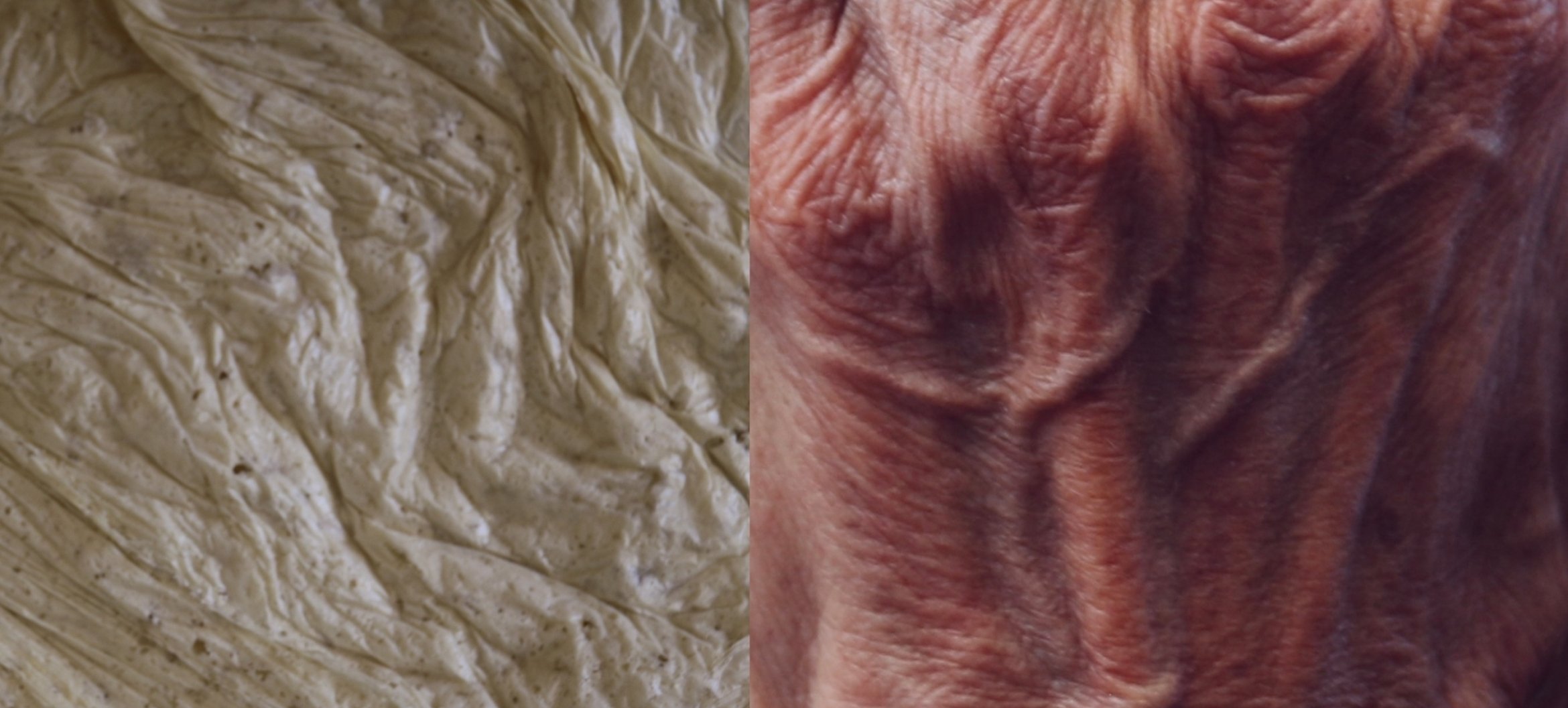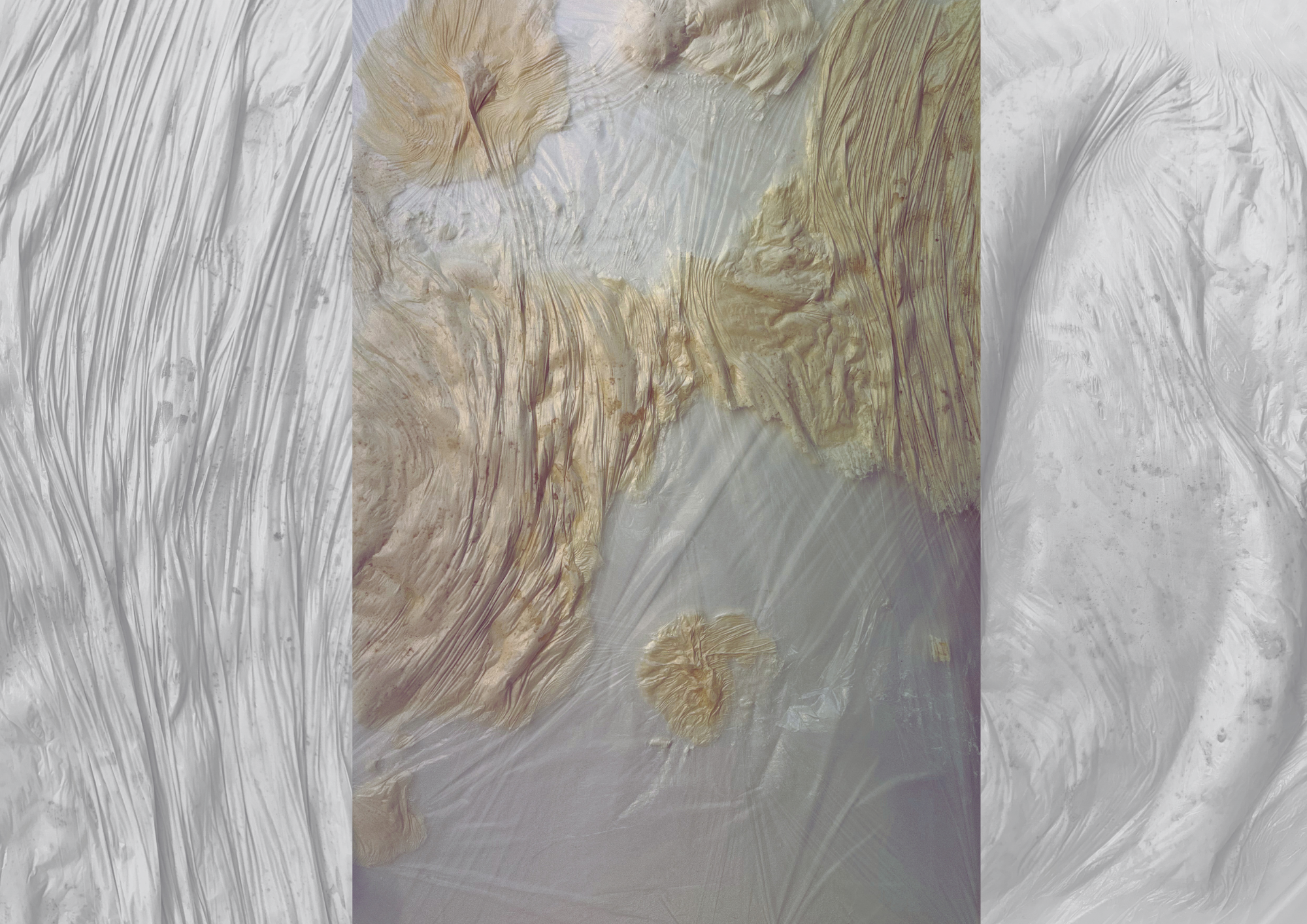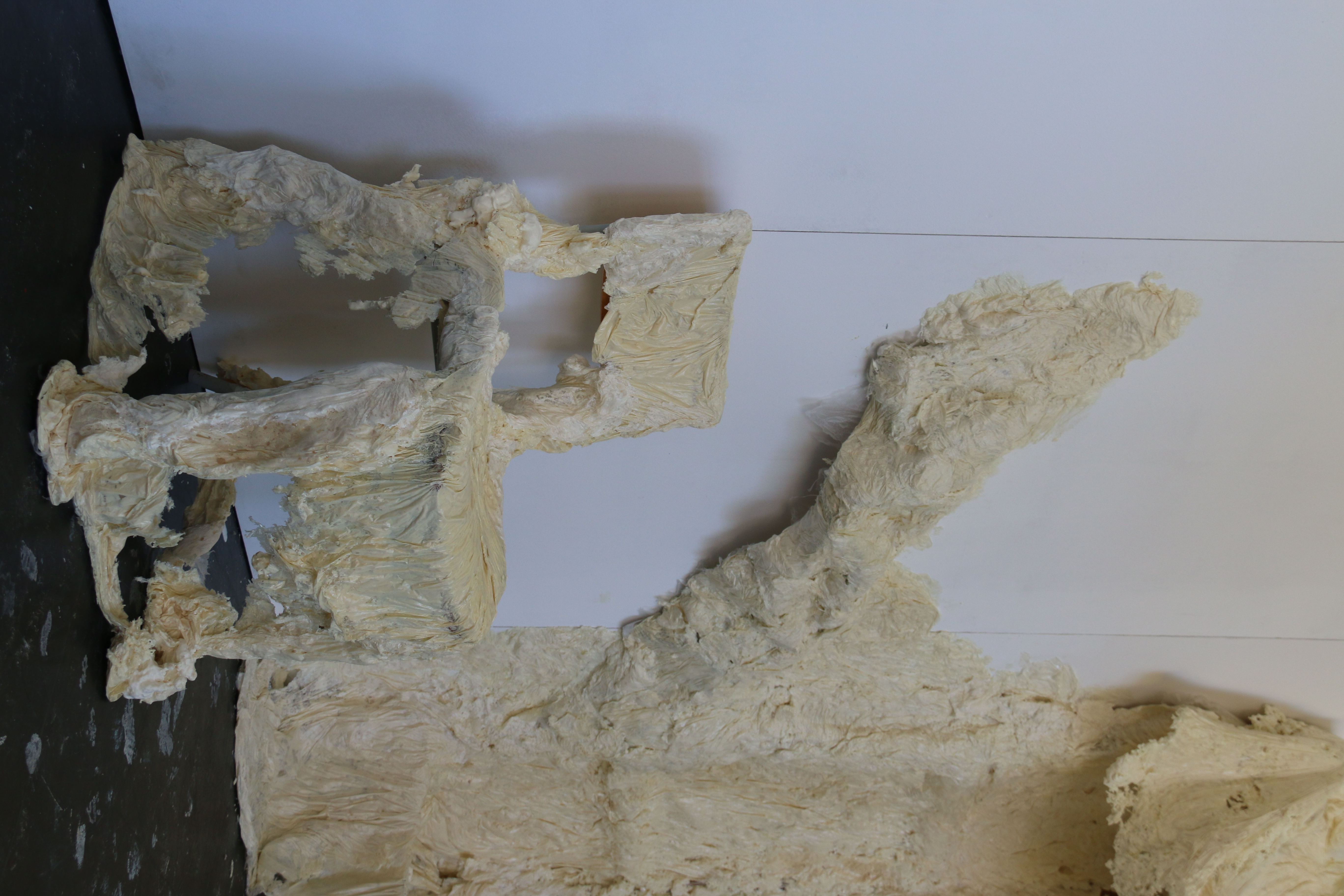Niloufar Ghalandari

Aging in Harmony with Space
In my exploration of interior architecture, I’ve always been fascinated by the parallel between how humans and their environments age together. This project stems from my personal experiences of living far from my family and observing the challenges my grandparents face as they age. I’ve often wondered how our perception of space evolves over time and how environments can better support the changing needs of older adults.
As people age, their physical stature and posture shift, making them shorter and more hunched, and tasks that once took minutes may take significantly longer. Their skin becomes more fragile and translucent, and they often need additional support for simple movements. These changes profoundly affect how they interact with their living spaces, making once-familiar environments feel challenging and less accommodating.

A skin-like surface evokes a connection to space or a weathered wall. Its textures beautifully convey a sense of change and the passage of time.
Through my research, I aim to highlight how these physical and perceptual changes necessitate a rethinking of interior design to create environments that evolve alongside their inhabitants. I want to inspire architects and designers to consider the evolving needs of aging populations, ensuring that spaces remain not only functional but also comforting and supportive.

Where the surface stretches with ease for the young, but folds into resistance for aging bodies.
Ultimately, my project seeks to foster empathy and awareness, encouraging a shift in how we design and perceive the places we call home. By aligning the aging of spaces with the aging of their occupants, we can create more inclusive, adaptable, and humane environments.
This page was last updated on June 24, 2025